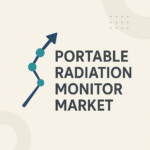Residential and Commercial Security Market: Trends, Drivers, and Future Outlook
The residential and commercial security market has undergone a significant transformation over the past decade, driven by rapid technological advancements, increasing urbanization, and the growing importance of safety in everyday life. Security concerns are no longer limited to high-risk zones or elite institutions. From smart homes to large-scale corporate campuses, demand for efficient, integrated, and intelligent security systems is at an all-time high.
Market Overview
The global residential and commercial security market is a dynamic ecosystem that encompasses a wide array of products and services, including surveillance cameras, access control systems, alarm systems, intercoms, video doorbells, and integrated monitoring solutions. Traditionally dominated by hardware manufacturers and alarm service providers, the market now also includes a rising number of software vendors offering cloud-based platforms, artificial intelligence (AI) analytics, and cybersecurity services.
The growing threats of burglary, unauthorized access, terrorism, and data breaches have led to increased investment in both physical and digital security infrastructure. This dual emphasis is pushing businesses and homeowners alike to seek smarter, more comprehensive systems that can provide real-time alerts, remote monitoring, and proactive threat mitigation.
Key Drivers of Growth
1. Urbanization and Smart Cities
As urban populations grow, cities are investing heavily in smart infrastructure, which includes surveillance, traffic management, and public safety systems. Smart cities require smart security systems. Residential complexes, gated communities, and high-rise buildings are being designed with security embedded at their core. For commercial properties, everything from office buildings to retail centers is incorporating centralized access controls, biometric scanners, and AI-powered surveillance.
2. Technological Advancements
Modern security systems have evolved far beyond traditional CCTV setups. Today’s security market is heavily influenced by technologies such as facial recognition, AI, machine learning, Internet of Things (IoT), and cloud computing. These advancements enable real-time analytics, remote control via mobile devices, and predictive threat assessment. AI-enabled video analytics can now identify suspicious behaviors, recognize license plates, and differentiate between authorized and unauthorized individuals.
3. Increasing Crime Rates and Security Awareness
In many parts of the world, rising crime rates have heightened the awareness of personal and property safety. Homeowners and businesses are no longer waiting for incidents to happen. There is a proactive approach toward security, with consumers looking for systems that not only respond to threats but also deter them. Even in lower-crime areas, security is seen as a necessary investment rather than a luxury.
4. Remote Monitoring and Cloud Integration
Remote monitoring has become a vital component of modern security systems, especially for residential users. Whether it’s checking the security camera feed while on vacation or receiving an alert about unusual activity, cloud-based systems allow users to stay connected at all times. For commercial facilities, cloud integration also simplifies management across multiple locations and supports centralized control.
5. Rise of Smart Homes and IoT Devices
The smart home revolution has brought security to the forefront of home automation. Devices like smart locks, video doorbells, and connected sensors are not only convenient but also critical in creating secure home environments. These devices can often be integrated into broader home automation systems, allowing users to control lighting, temperature, and security from a single app.
Residential Security Segment
The residential security market is experiencing strong growth, fueled by an increase in consumer spending on smart home devices and an emphasis on family safety. Home security systems are no longer reserved for luxury homeowners. DIY systems have become widely available and affordable, making it easier for more households to adopt them.
Wireless security devices, in particular, have gained traction due to their ease of installation and flexibility. Users can set up door and window sensors, motion detectors, and indoor/outdoor cameras without the need for professional installation. Subscription-based services also offer real-time alerts, video storage, and emergency response coordination.
Integration with voice assistants like Amazon Alexa, Google Assistant, and Apple Siri further enhances user experience. These integrations allow homeowners to arm or disarm their systems using voice commands and receive instant notifications about security breaches.
Commercial Security Segment
Commercial properties face a different set of challenges compared to residential settings. These include employee access control, inventory protection, regulatory compliance, and protection of intellectual property. As such, the commercial security market is often more complex and requires robust, scalable solutions.
Access control systems, such as keycards, biometric readers, and mobile-based credentials, are now standard in many commercial buildings. Additionally, businesses are investing in enterprise-grade surveillance systems with high-resolution cameras, long-range night vision, and real-time video analytics.
Commercial properties are also turning to cybersecurity solutions to protect against internal and external threats. As building systems become increasingly interconnected, the convergence of physical and digital security is becoming more pronounced. A breach in one system—say, a hacked access control panel—can lead to larger vulnerabilities if not properly secured.
The COVID-19 pandemic has further impacted commercial security needs. Businesses are adopting touchless access controls, thermal imaging cameras for temperature checks, and AI-driven systems that ensure social distancing and mask compliance in shared spaces.
Market Challenges
Despite the overall positive outlook, the residential and commercial security market faces certain challenges:
-
Privacy Concerns: The use of facial recognition and constant video surveillance has raised concerns about privacy rights and data protection. Consumers and regulators alike are scrutinizing how personal data is collected, stored, and used.
-
Cybersecurity Threats: As more security devices connect to the internet, they become vulnerable to hacking. A poorly secured device can serve as an entry point for cybercriminals, potentially compromising the entire system.
-
High Initial Costs: While prices have come down significantly, the initial investment in high-quality security systems—especially for large commercial properties—can still be a barrier for some businesses.
-
Integration and Compatibility: With so many different providers and platforms in the market, integrating systems from different vendors can be complicated. Compatibility issues may limit functionality or require expensive custom solutions.
Future Outlook
Looking ahead, the residential and commercial security market is poised for continued growth. The integration of AI and machine learning will make systems more intelligent and responsive. Predictive analytics will help anticipate potential threats before they occur, while automation will streamline everything from access control to emergency response.
The market will also likely see more convergence between security and convenience. Consumers and businesses increasingly expect seamless, user-friendly systems that don’t just secure, but also simplify daily operations.
Cloud-based services, mobile-first applications, and subscription models will dominate, offering scalable solutions for users of all sizes. Moreover, ongoing improvements in sensor technology, battery life, and wireless communication will enhance the reliability and effectiveness of security devices.
Governments and private organizations will continue to invest in public-private partnerships to enhance urban safety, which will further drive demand for advanced surveillance and access control systems.
Conclusion
The residential and commercial security market is entering a new era, where smart technologies, proactive defense strategies, and integrated systems define the standard. Driven by evolving threats and increasing consumer expectations, the sector is rapidly transforming into an intelligent, adaptive industry. As technology continues to evolve and security needs grow more complex, the demand for reliable, scalable, and user-friendly security solutions will only intensify.

